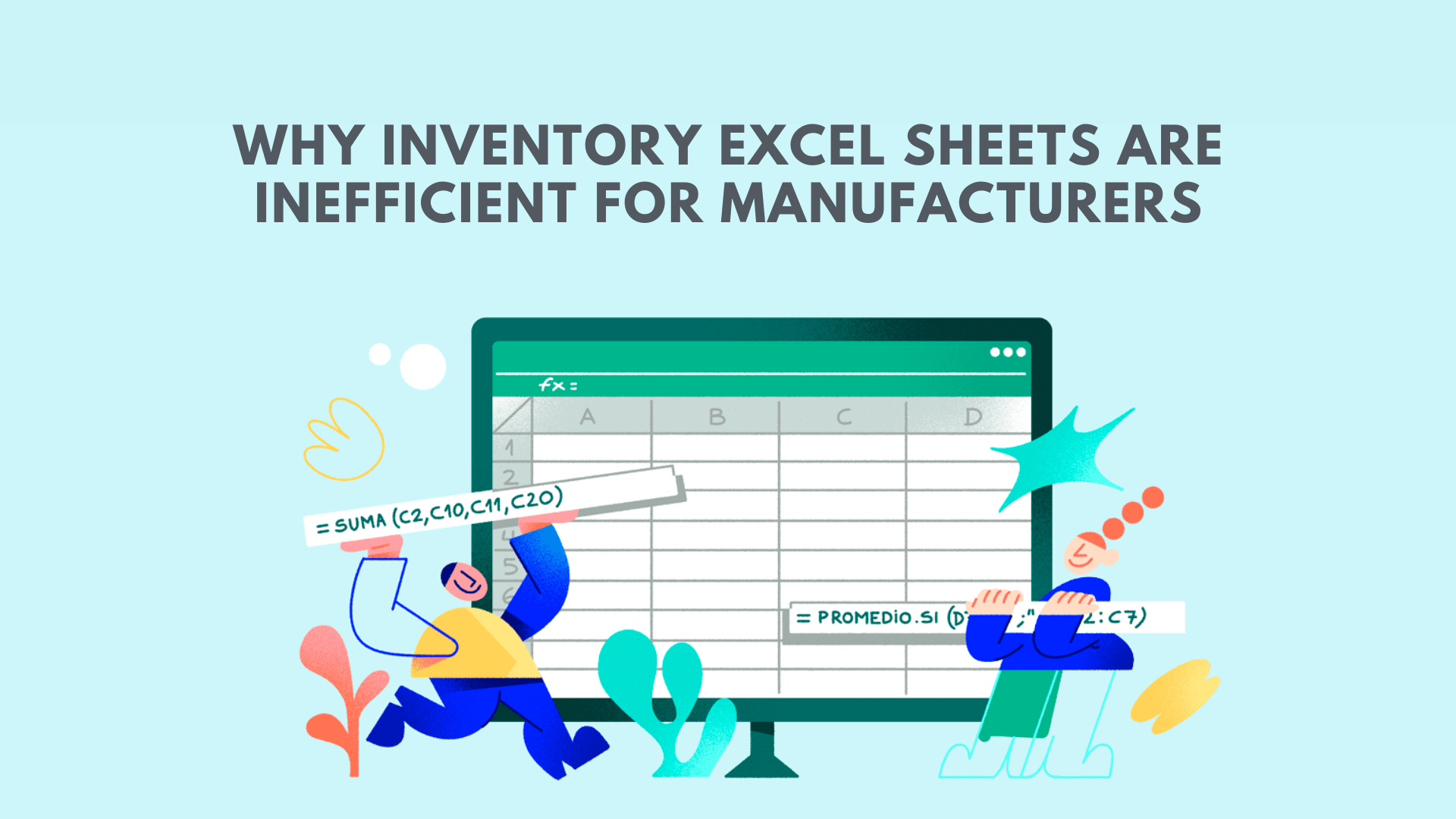In the realm of manufacturing, maintaining efficient operations is crucial for profitability and growth. One area that often poses significant challenges is inventory management. Many manufacturers still rely on Excel sheets to track their inventory, but this approach is increasingly proving to be inefficient. Here’s why:
1. Human Error and Data Inconsistency
Excel sheets are prone to human error. A simple typo or miscalculation can lead to significant discrepancies in inventory data. Given the complexity of manufacturing operations, errors in inventory records can result in costly mistakes, such as ordering excess stock, running out of essential materials, or misallocating resources.
2. Time-Consuming Manual Processes
Updating inventory Excel sheets requires manual data entry, which is time-consuming and labor-intensive. Employees need to spend hours inputting data, cross-referencing information, and ensuring accuracy. This time could be better spent on more strategic tasks that drive the business forward.
3. Lack of Real-Time Data
In manufacturing, having real-time inventory data is critical for making informed decisions. Excel sheets are static documents that require constant updating. By the time data is entered and shared, it may already be outdated, leading to delays in production and missed opportunities.
4. Scalability Issues
As a manufacturing business grows, the volume of inventory data increases exponentially. Excel sheets are not designed to handle large datasets efficiently. They become cumbersome and slow, making it difficult to quickly access and analyze information. This can hinder the ability to scale operations smoothly.
5. Limited Collaboration and Accessibility
Excel sheets are often stored locally on individual computers or shared via email, limiting accessibility and collaboration. This siloed approach can lead to communication breakdowns and inconsistencies in data. Cloud-based inventory management systems, on the other hand, allow multiple users to access and update information in real-time from anywhere.
6. Poor Integration with Other Systems
Manufacturers rely on various systems, such as ERP (Enterprise Resource Planning), MRP (Material Requirements Planning), and CRM (Customer Relationship Management). Excel sheets do not integrate seamlessly with these systems, leading to data silos and inefficient workflows. Integrated inventory management solutions provide a unified view of operations, improving efficiency and decision-making.
7. Difficulty in Data Analysis and Reporting
Analyzing inventory data and generating reports in Excel can be complex and time-consuming. Manufacturers need to track key performance indicators (KPIs), monitor trends, and make data-driven decisions. Advanced inventory management systems offer built-in analytics and reporting tools that provide actionable insights at the click of a button.
8. Security Concerns
Inventory data is critical to the smooth operation of a manufacturing business. Excel sheets are vulnerable to security breaches, especially when shared via email or stored on unsecured devices. Modern inventory management systems offer robust security features, including encryption, access controls, and regular backups, ensuring that sensitive data is protected.
Conclusion
While Excel sheets have been a staple in inventory management for years, they are no longer sufficient for the complex needs of modern manufacturers. The inefficiencies associated with manual data entry, lack of real-time information, limited scalability, and integration challenges can hinder growth and profitability. By investing in advanced inventory management solutions, manufacturers can streamline their operations, improve accuracy, enhance collaboration, and make better-informed decisions, ultimately driving business success.
4o









